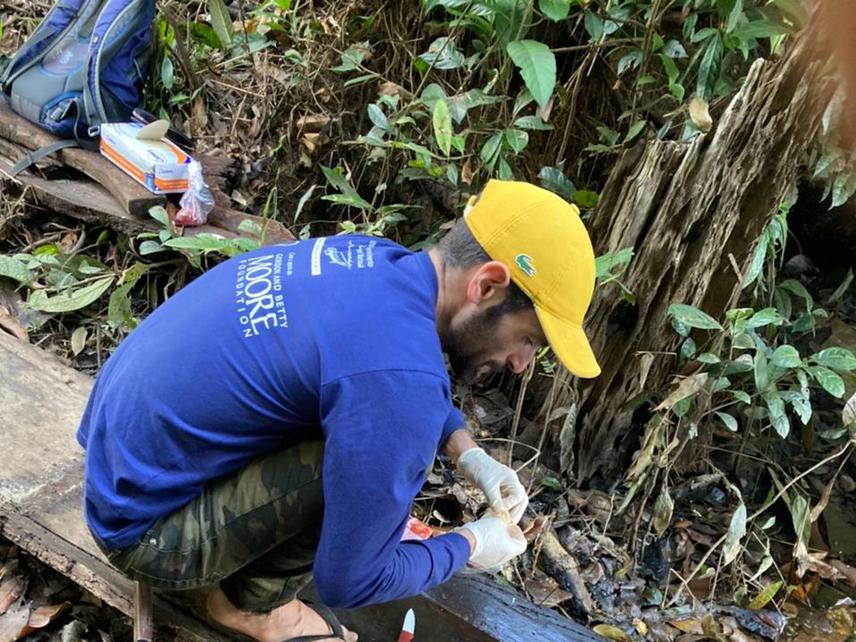Daniel Tregidgo
The main aim of this research is to the reveal the extent of mercury contamination in Amazonian wildlife. Specific aims include (1) evaluation of which species’ mercury concentrations exceed ecological health thresholds, (2) evaluation of which commonly consumed wildlife species’ meat exceeds WHO safe consumption limits (0.5 mg/kg), and (3) investigation of the transfer of mercury from aquatic to terrestrial systems.
Undertaken as a partnership between Amazonian environmental organisations, the results of this project will help to inform and refine evidenced-based conservation and health management of local conservation areas and their traditional and indigenous populations.

Mercury is a potent neurotoxin released into Amazonian rivers as a waste product of artisanal gold mining. It moves up food webs from contaminated water and sediment to plants, aquatic insects, fish, and humans. Fish commonly exceed WHO safe consumption limits and local Amazonian people have been shown with some of the highest levels of mercury exposure ever recorded globally. Studies has evidenced serious human health implications, and hence toxicology research has centred on humans and the fish they eat. However, mercury contamination in Amazonian wildlife has never been studied, which we expect to be a significant threat to the health of wildlife, and that of local communities that consume bushmeat.
High mercury concentrations have been documented in diverse North American wetland wildlife with various impacts on fitness, but notably by compromising reproductive success. Importantly, mercury bioaccumulation is no longer thought of as an issue just for fish-consuming species, with dangerous and even higher levels detected in wetland invertebrate-consuming species. Given that Central Amazonia, our study region, is a “water-world” of rivers, lakes and seasonally inundated forest, we predict widespread mercury contamination in Amazonian piscivorous and invertivorous wetland wildlife. Given the known impacts on reproduction in wildlife from other regions, mercury contamination in the Amazon could represent a major yet currently unstudied threat to the conservation of wildlife populations.
There have been multiple calls by environmental practitioners and academics for study into mercury concentrations in Amazonian wildlife. Existing studies are few in number, sample size and taxonomic breadth. This can be explained largely by the considerable logistical and ethical barriers involved in sampling wildlife.
Local environmental practitioners are essential partners in the project from start to finish. The project originated from their initial calls for this research in order to facilitate their evidence-based management of the nine conservation areas for which they are responsible - covering an area twice the size of Belgium! Non-invasive wildlife sample collection will be made possible by enabling bushmeat confiscated by our partners’ routine operations to be diverted from being destroyed. Bushmeat samples will then by analysed in the laboratory to reveal mercury concentrations in a large diversity of Amazonian wildlife for the first time. We will combine our findings with secondary data to estimate the consequences for the fitness of the wildlife species, and for the health of local bushmeat consumers.